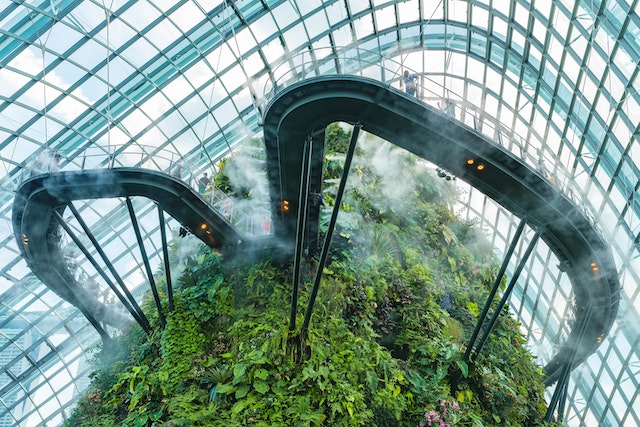Environmental concerns are at the heart of current issues. Faced with these challenges, circular and ecologicalbuildings appear as a relevant solution to reconcile urban development and preservation of natural ecosystems. In this article, we will present you the 10 advantages of a circular building. But first, let’s look at the concept of a circular building.
What is a circular building?
A circular building is a building designed according to the principles of the circular economy.
This implies that when a building is constructed, all components are selected and installed to generate no end-of-life waste. They can be used on another site or be recovered by a processor for reuse or reconditioning.
But now let’s look at the benefits of designing a circular building.
10 Advantages of a circular building
Reduction of the carbon footprint
Circular green buildings contribute to the reduction of greenhouse gas emissions by using materials with a low carbon footprint that are reusable or recyclable.
Energy saving
Circular green buildings are designed to minimize energy requirements through efficient insulation, optimal orientation, and the use of energy-efficient heating and cooling systems.
Waste reduction
These buildings promote the recycling, reuse and repair of building materials and components, thereby limiting waste production and its impact on the environment.
Improvement of indoor air quality
Through the use of environmentally friendly and non-toxic materials, circular green buildings offer improved indoor air quality, which has a positive impact on the health and well-being of occupants.
Durability and longevity
Circular green buildings are built to last, with durable materials and design for easy maintenance and repair. This durability reduces renovation and demolition costs over the long term.
Biodiversity and environmental integration
Circular green buildings integrate natural elements such as green roofs, vertical gardens or habitats for local fauna, thus promoting biodiversity and the harmonious integration of the building into its environment.
Comfort and well-being of the occupants
In addition to improving indoor air quality, circular green buildings offer superior thermal and acoustic comfort, contributing to the well-being and satisfaction of occupants.
Flexibility and modularity
The design of circular green buildings provides for great flexibility and modularity, facilitating adaptations and transformations to meet the changing needs of occupants and uses.
Aesthetics and innovative design
Circular green buildings combine aesthetics and functionality, with innovative forms and materials that give a unique and modern architectural identity.
Economic valuation
Due to their modularity and flexibility, the products used in circular green buildings are easily recoverable and have a recoverable financial value in the operational phase. Meeting the criteria of the European taxonomy, they will not be “obsolete” from an environmental and carbon point of view on the real estate market.
Environmental Awareness
Circular green buildings are true showcases of innovation and sustainable development, raising public awareness of the importance of preserving health and the environment and adopting green practices.
Conclusion
Circular green buildings represent a unique solution to reconcile urban development and environmental preservation. They offer many benefits, both for the occupants and for society as a whole, in terms of health, energy performance, quality of life and respect for nature. By adopting this type of construction, we are helping to build a resilient and responsible future.
